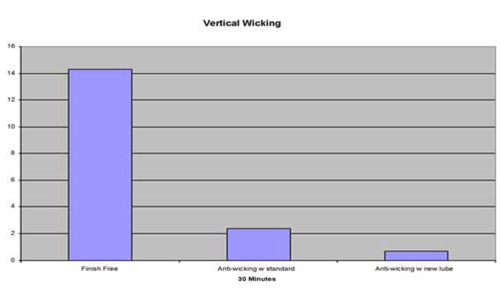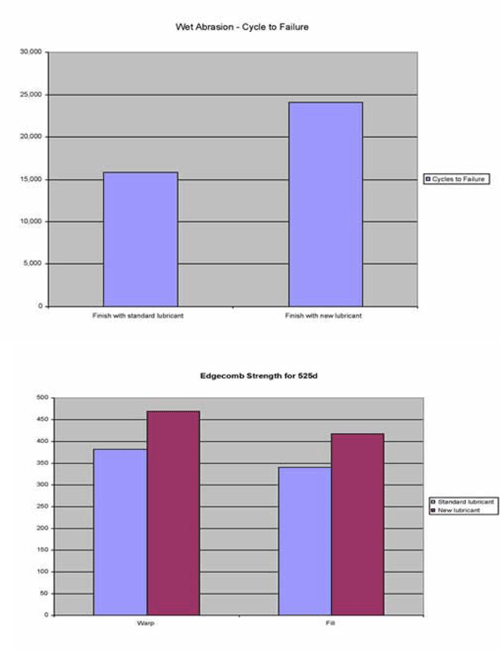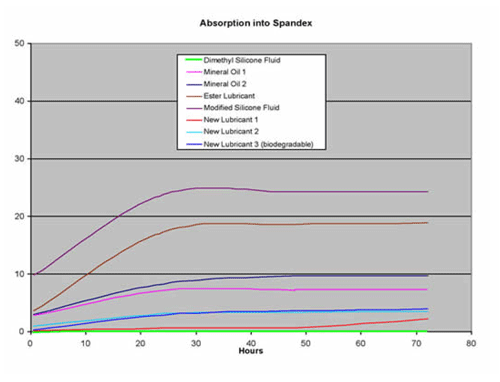Press Release
New Fiber Lubricants Take on New Roles
By Srinivasan Ranganathan
Goulston Technologies, Inc.
The original purpose of fiber lubricants was to provide adequate surface and antistatic protection during textile processing. As novel applications continue to emerge for synthetic fibers, meaning applications beyond commodity apparel and home furnishing end-uses, fiber lubricants are called upon to provide enhanced value to the fiber surfaces. Fiber lubricants have taken on the role of surface modifier and are now being required to provide functional or tactile benefits such as hydrophilic/hydrophobic properties, enhanced adhesion, barrier properties, fabric strength, softness etc.
Another significant trend in the area of fiber lubricants pertain to the awareness of the need for sustainable development in fiber industry. While the amount of fiber lubricants required for downstream processing or end use properties remains low in terms of add-on level, continued growth manmade fiber industry has resulted in the use of more than 1 billion lbs of fiber lubricants annually. The vast majority of these chemicals have a limited life span on the fiber surface, and are usually removed in scouring or dyeing processes. Since effluent from post-processing may become a burden to the environment or treatment works, fiber producers have begun to demand and adopt more sustainable fiber lubricant solutions. Contrary to conventional wisdom that there would be performance trade-offs for more sustainable products, sustainable development in the fiber lubricant area has actually resulted in products that are better for the environment as well as textile processes. Two such examples in carpet and spandex area are included in the discussions.
New Lubricants for Enhanced Performance
New industrial fabrics with unique functional attributes have grown in demand, and they have pushed the need for specialty lubricants to provide critical function to the final properties of the fabric. Some examples of these fabrics are: anti-wicking fibers used in tarpaulins, low wet abrasion yarns used in marine cordage, defect free nylon filament used in air bags. Each of the different end use fibers has required development of new lubricants to achieve the desired level of performance.

For anti-wicking end uses, new lubricants must be compatible with water repellent agents. The new lubricants must allow for minimal use of emulsifiers in order to achieve the best anti-wicking properties. Goulston Technologies, Inc. has developed a series of lubricants that are easy to disperse or are self-dispersing. This means the new finishes result in reduced vertical wicking.
Marine cordage requires very low wet abrasion. The lubricants designed for this end use must have enhanced spreading properties, be substantive to the polymer, avoid removal with water, and be able to withstand very high pressures. Chart II shows the positive impact the right lubricant can have on the wet abrasive resistance of the marine cord typically measured as the cycles to failure.

Air bag yarns have stringent requirements on the level of defects present and must be compatible with numerous downstream treatments. They also need high edgecomb strength. Polyol esters (i.e. pentaerythritol tetrapelargonate) have been used in the past, but they typically generate too much friction resulting in damage to the yarn. Further they do not help improve edgecomb results. New fiber lubricants have been designed to maximize thermal stability while providing the lowest hydrodynamic friction possible to reduce broken filaments and yarn breaks. The new lubricants have also been engineered to allow for enhanced compatibility with the adhesives used in the air bag construction phase.
In the staple fiber area, fiber lubricants have been used successfully to enhance fluid transport or fluid barrier properties in hygienic applications of PET and polyolefin staple fibers for quite sometime. Today’s fiber lubricants are required to serve similar purpose in more demanding and durable applications such as apparel, home furnishings, wipes, filters, battery separators, face masks, molded assemblies etc. Fiber lubricants are also used to change the tactile properties of the nonwoven fabrics such as softness, drape, bulk, scroopiness etc. While the fiber and yarn physical properties greatly influence the tactile properties of the woven fabrics, fiber and yarn surface coatings can enhance the desired final fabric properties.
Staple fiber lubricants are being explored as a sustainable alternative to reduce the use levels of adhesives and other bonding agents. Staple lubricants also serve as a durable carrier for functional treatments such as flame retardants, antimicrobials, microencapsulates, comfort (aloe, lanolin) etc.
As nonwoven fabrics find more application in food processing and packaging, fiber lubricants must meet the processing and end use needs as well as comply with regulatory requirements. An interesting trend is that some of the new EU requirements for hygienic end uses require compliance with the FDA guidelines intended for food safety.
Sustainable Development in Fiber Lubricants
As the leader in fiber lubricant technology, Goulston Technologies, Inc. is committed to sustainability by providing the highest performance fiber finish technology possible with the lowest environmental impact. Goulston has created a comprehensive plan to achieve this goal by:
- Maximizing the use of biosustainable and biodegradable raw materials
- Using raw materials that utilize low energy manufacturing processes
- Ensuring that the components that are safe to use
- Designing finishes that provide efficient process at low finish levels
For carpet applications, Goulston has developed two new products, Lurol NF-SB and Lurol NF-SC, which achieve sustainable development goals as well as the required processing performance at substantially lower finish levels. The new finishes showed improved fiber-to-metal lubricity and adequate ability to dissipate static charge over the current commercial product Lurol NF-P (Table 1) at 1% finish level.
Table 1: High Speed Fiber to Metal Friction & Antistatic Properties
| Sample | Friction Force (grams) | |||
|---|---|---|---|---|
| 100 m/min | 200 m/min | 300 m/min | Voltage, V | |
| Lurol NF-P | 120±12 | 123±11 | 121±11 | -324 |
| Lurol NF-SB | 102±11 | 109±10 | 104±12 | -215 |
| Lurol NF-SC | 111±11 | 115±10 | 112±8 | -193 |
These finishes show improved performance over today’s premiere nylon BCF products in extrusion at 3500m/min (less flare and reduced broken filaments) with 30% less finish applied. Most impressive was the visible reduction in dusting and fly generation during twisting at 6500rpm (Table 2).
These finishes show improved performance over today’s premiere nylon BCF products in extrusion at 3500m/min (less flare and reduced broken filaments) with 30% less finish applied. Most impressive was the visible reduction in dusting and fly generation during twisting at 6500rpm (Table 2).
Table 2: Twisting Dust/Fly Levels
| Finish ID and Finish Level | Rating (5=Low Dust/Fly; 1=High Dust/Fly) |
|---|---|
| Lurol NF-P (0.9%) | 3.5 |
| Lurol NF-P (0.6%) | 1 |
| Lurol NF-SB (0.6%) | 4.5 |
| Lurol NF-SC (0.6%) | 5 |
The extrusion and twisting evaluations indicate that our approach is effective and sufficient spreading and fiber surface protection at lower than standard processing levels was definitely achieved.
Polydimethyl siloxanes (PDMS) have been employed as the main lubricant on spandex yarns for many years due to their excellent lubrication properties and extremely low level of penetration into the spandex polymer. Unfortunately silicone fluids are inferior for biodegradability as well as application deficiencies such as incompatibility with metallic salts, increased dyeing defects, and high cost. Mineral oils have been used by many finish producers to reduce the cost impact of the silicone fluids, but many petroleum distillates exhibit penetration levels around 10% (versus ~0.1% for PDMS) leading to performance issues and changes in the spandex polymer. Ester lubricants are not commonly employed since they penetrate the polymer to an even higher degree than mineral oils.

Goulston Technologies, Inc. has focused its research on developing new classes of sustainable lubricants that provide better biodegradability than silicone fluids. These new lubricants allow for reduction of dyeing defects associated with silicone fluids and improved compatibility with the magnesium stearate anti-blocking agent. They also exhibit significantly lower penetration levels into the spandex polymer than the esters.
Summary
Synthetic fibers will continue to find new applications in non-apparel applications, and the bulk of the growth will be driven by innovation. Fiber lubricants offer a simple, direct, cost effective and flexible venue to modify fiber surfaces and add value to the end users. With continued focus in R&D and sustainable development, fiber lubricant manufacturers such as Goulston Technologies, Inc. will incorporate additional functionality to the fiber surfaces.

